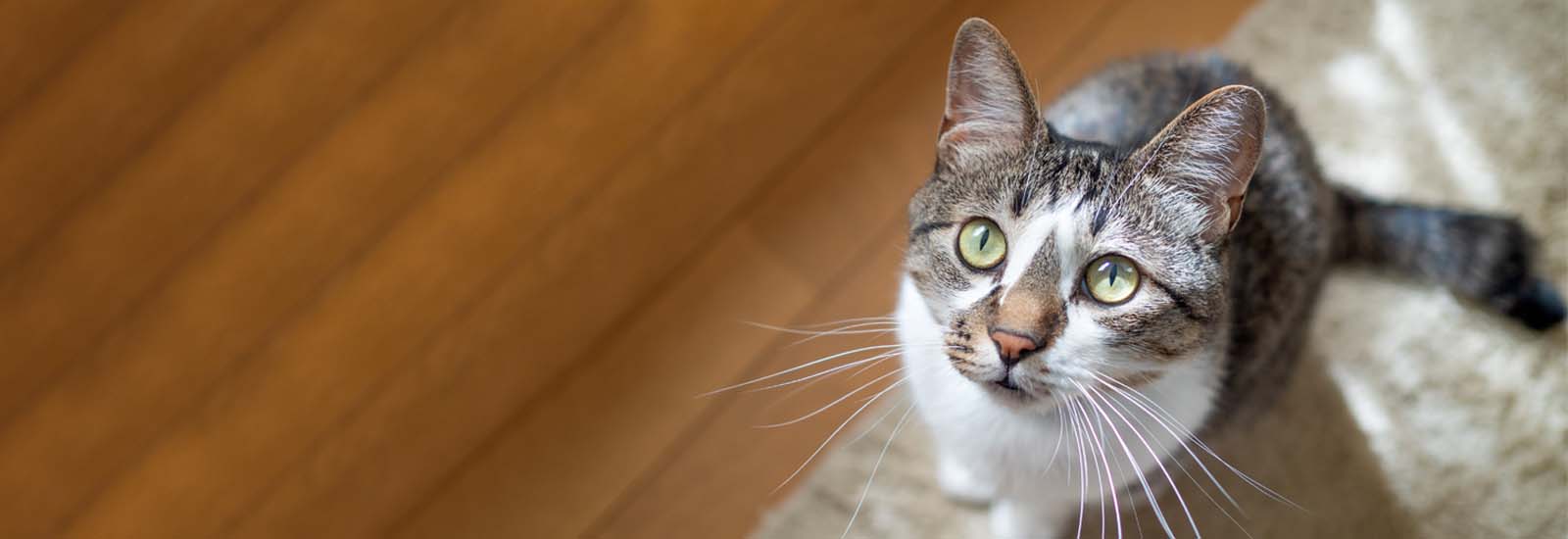The right cat first aid kit
In the everyday life of a cat, you can always expect both minor and major emergencies from time to time. In order to be prepared for a wide variety of possible situations, you should always have some basic medical instruments, dressing materials and medicines at hand. Our checklist shows which items are essential.
Well-equipped for emergencies
Everyone is happy if the first aid kit in the car is never required. The same applies to a cat first aid kit. The utensils may lie unused in a drawer for months or even years – but at some point, the moment may arrive when a cat first aid kit is extremely important. One day your cat may come home with a bloody paw, a scratch, or parasites. In many cases, you will have to act quickly – either to solve the problem yourself or to provide first aid before going to the vet. There is no alternative to visiting the vet if the injury is of a more serious nature or if you are not sure what is wrong with your cat. Especially when it comes to giving your cat a medication, you should first discuss this with a vet that you trust. Under no circumstances should you use medicines for humans or dogs as a substitute, as these could be toxic for cats.
What should a cat first aid kit contain?
Although cats that are allowed outdoors are more likely to need a cat first aid kit at some point, to be on the safe side it is also worth keeping a few utensils at home for indoor cats. These include:
Instruments:
- Tweezers (to remove thorns etc.)
- Tick removal tweezers (quick removal can prevent the transmission of diseases)
- Bandage scissors
- Claw clippers (if the cat’s claws are not sufficiently worn down by themselves)
- Small torch (for checking wounds, mouth, ears)
- Fever thermometer (for checking body temperature)
- Pipette or disposable syringe without needle (for eye drops)
- Optional: needles, pill cutter, flea comb, cone collar
Medicines:
- Disinfectant
- Wound ointment
- Painkillers
- Antiparasitic agent
- Rescue drops
- Ear cleansing solution
- Eye drops
- Optional: dental care gel, homeopathic remedies
Dressing material:
- Plasters
- Gauze bandages
- Compresses
- Cotton wool
- Wound dressings
- Disposable gloves
How should I react in an emergency?
It is, of course, easier said than done – but in an emergency, it is first of all important that you remain calm and keep a clear overview of the situation. Decide whether you want to deal with the problem yourself, carry out first aid or (for example, in the case of larger wounds) take your pet to a veterinary clinic as soon as possible. For this purpose, a transport box should always be readily accessible.
Tip: In an emergency situation, every minute counts. Therefore, you should save the telephone numbers of your vet, a veterinary clinic, the poison control centre and an animal emergency service on your mobile phone and ideally also print them out and leave them at home. When you are not there, another person will be able to find them quickly and call the appropriate service.
Also, set a reminder on your mobile phone/device to regularly check the expiry dates of the contents of your first aid kit (for example, eye drops) and to replace any items that have expired.
You may also like this

Diarrhoea in cats
Immediate measures and dietary changes in cases of diarrhoea

Ticks on cats
How to safely remove ticks from your cat

Stomach problems in cats
Possible causes of stomach upset

When a cat keeps scratching itself
Possible causes if your cat keeps scratching itself
